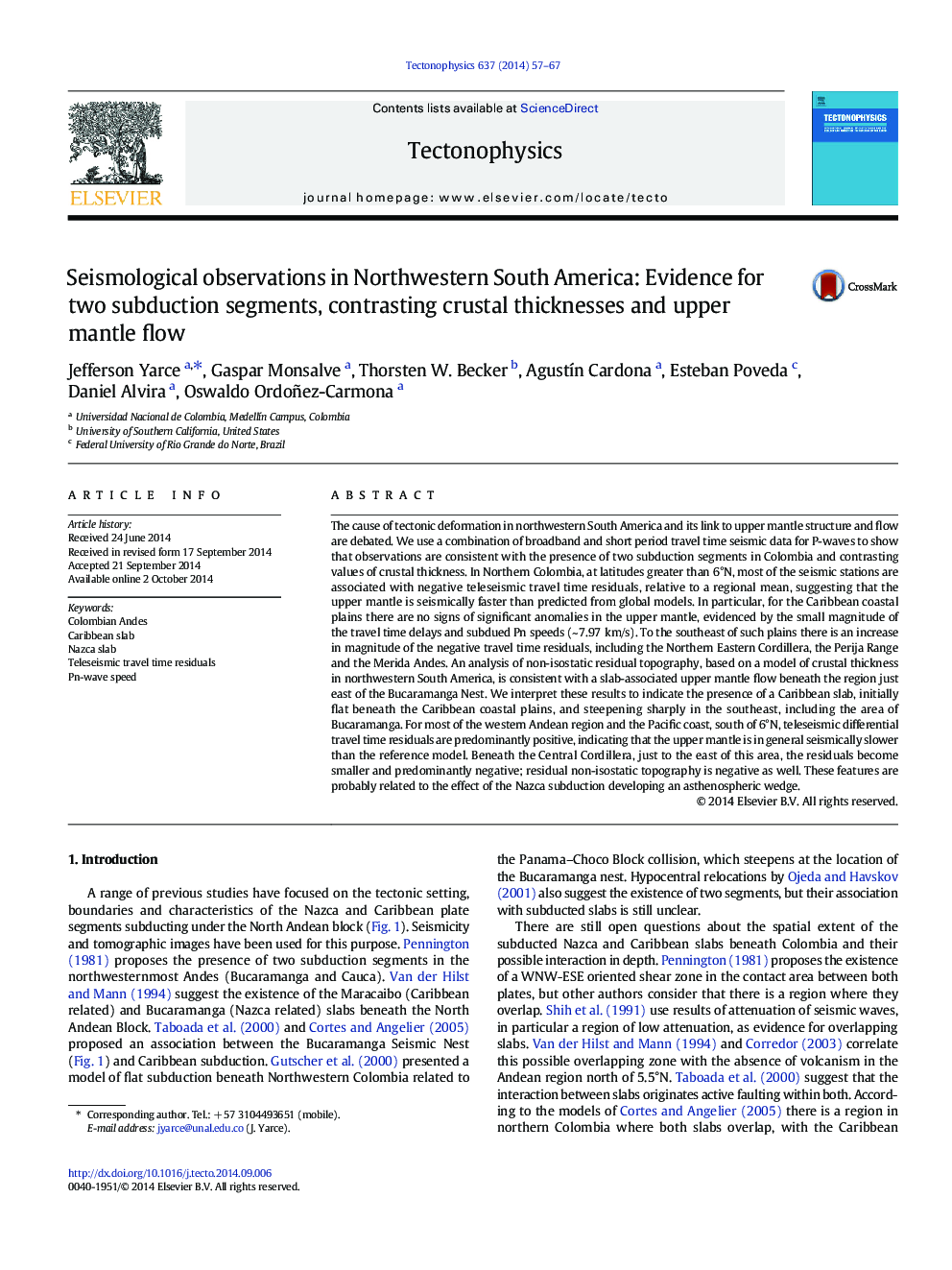| کد مقاله | کد نشریه | سال انتشار | مقاله انگلیسی | نسخه تمام متن |
|---|---|---|---|---|
| 6433753 | 1636754 | 2014 | 11 صفحه PDF | دانلود رایگان |
- We use teleseismic travel times to infer upper mantle average structure.
- We correlate results with the presence of Caribbean and Nazca Slabs.
- Results suggest a Caribbean slab with an initially flat subduction.
- The Caribbean slab may steepen at around the location of the Bucaramanga Nest.
- Results propose a Nazca plate that subducts “normally” beneath Colombia.
The cause of tectonic deformation in northwestern South America and its link to upper mantle structure and flow are debated. We use a combination of broadband and short period travel time seismic data for P-waves to show that observations are consistent with the presence of two subduction segments in Colombia and contrasting values of crustal thickness. In Northern Colombia, at latitudes greater than 6°N, most of the seismic stations are associated with negative teleseismic travel time residuals, relative to a regional mean, suggesting that the upper mantle is seismically faster than predicted from global models. In particular, for the Caribbean coastal plains there are no signs of significant anomalies in the upper mantle, evidenced by the small magnitude of the travel time delays and subdued Pn speeds (~ 7.97 km/s). To the southeast of such plains there is an increase in magnitude of the negative travel time residuals, including the Northern Eastern Cordillera, the Perija Range and the Merida Andes. An analysis of non-isostatic residual topography, based on a model of crustal thickness in northwestern South America, is consistent with a slab-associated upper mantle flow beneath the region just east of the Bucaramanga Nest. We interpret these results to indicate the presence of a Caribbean slab, initially flat beneath the Caribbean coastal plains, and steepening sharply in the southeast, including the area of Bucaramanga. For most of the western Andean region and the Pacific coast, south of 6°N, teleseismic differential travel time residuals are predominantly positive, indicating that the upper mantle is in general seismically slower than the reference model. Beneath the Central Cordillera, just to the east of this area, the residuals become smaller and predominantly negative; residual non-isostatic topography is negative as well. These features are probably related to the effect of the Nazca subduction developing an asthenospheric wedge.
Journal: Tectonophysics - Volume 637, 10 December 2014, Pages 57-67
